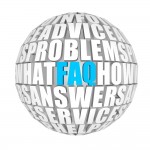 If you are even slightly involved with inbound marketing and lead generation as a whole, you will have come across a broad range of terms which go about explaining the various sales strategies, best practices, assets and metrics.
If you are even slightly involved with inbound marketing and lead generation as a whole, you will have come across a broad range of terms which go about explaining the various sales strategies, best practices, assets and metrics.
You will have come across recommendations to use #hashtags on Twitter, the importance of inbound links to your websites and ways to set up drop marketing campaigns.
What does it all mean and what are the accurate definitions?
We’ve recently pulled together a glossary of terms which covers much of the inbound marketing terminology you need to be familiar with.
We’ll release our glossary of terms over a series of blogs, focusing on areas such as:
- Lead Generation
- Landing Pages
- Email Marketing
- Blogging
- Marketing Automation
- Social Media
So…. If there’s a term that you’ve been trying to work out, which is inbound marketing lead generation related, you can be confident that it will shortly feature in one of our blogs. There is now nothing stopping you from initiating the journey towards achieving inbound marketing success. Of course, if you wish to get up to speed faster on the terminology then ask us a question via the call to action ‘ask a question’ box to your right.
Here are your first ‘7 Key Inbound Marketing Lead Generation Terms’
Term 1 – Lead
The definition: A person that transforms from an unidentified website visitor into a familiarised contact and a part of the sales cycle. This process occurs when the visitor provides his/her contact details in exchange for value adding content.
Term 2 – Lead Generation
The definition: Lead Generation is the process of attracting new leads. It is a marketing activity which drives a person to show interest in a product or service. Online this typically happens through providing vale adding content in exchange for contact information from a website visitor, who may have been directed to the site via an email campaign or blog promoting the content.
Term 3 – Landing Page
The definition: A campaign dedicated website page containing a form, which is used for lead generation. The page typically focuses on a marketing offer such as an e-book, report or a webinar and enables the capture of visitor information in exchange for the value adding content offer.
Term 4 – Conversion Rate
The definition: The number of landing page visitors who complete the form divided by the total number of people who visited the page.
Term 5 – Offer
The definition: The content which is provided once a landing page visitor has completed the form. Examples of offers include e-books, white-papers, reports, webinars and kits.
Term 6 – Lead To Customer Rate
The definition: This is expressed as a percentage, which is calculated by dividing the total number of customers generated by a specific marketing channel by the total number of leads generated in the same period of time for that channel.
Term 7 – Call To Action
The definition: A call to action is a text link, image, button of other kind of weblink which encourages a website visitor to visit a landing page and convert into a lead. Examples of CTAs include: ‘Subscribe Now’ or ‘Download the Whitepaper NOW’.
Get in touch!
Sales Accelerant offers comprehensive Inbound Marketing and Outbound sales lead generation services. You can get up to date advice on how to create significance for your business with a fully integrated multi-channel sales lead generation strategy tailored to your needs to engage and convert your prospects.
Call us NOW on 0845 3058145 or email us – the first step to tangible increases in traffic and significant sales.
www.salesaccelerant.co.uk
www.salesaccelerant.co.uk/blog
* Subscribe now to our blog via the CTA to the right hand side of this blog page and receive your FREE lead nurturing report


